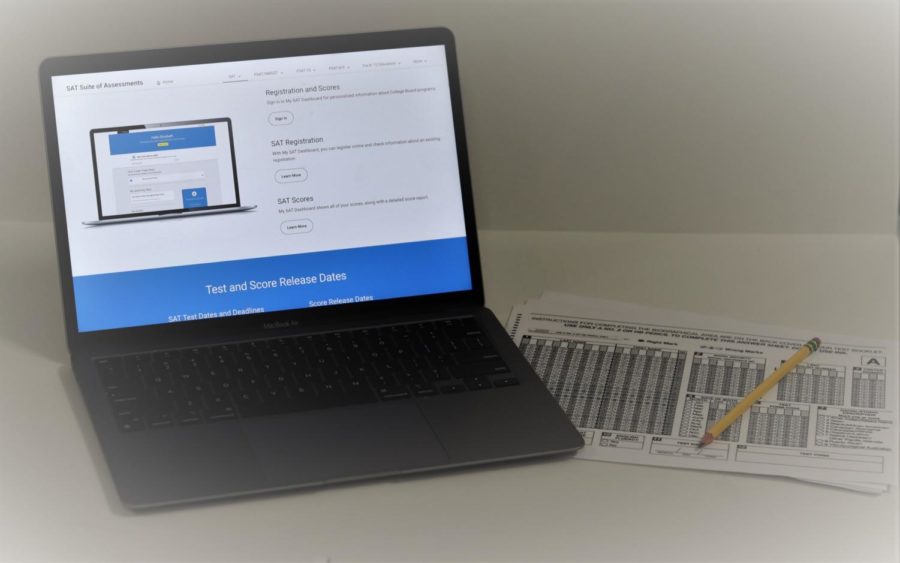The SAT is set to change… but should it?
An in depth look at the new test, and all it entails
photo by Reagan Eastlick
Students contemplate the shift to online SAT testing. The proposed changes will affect the current sophomore class.
I can smell it. I can close my eyes and smell the graphite. I can hear the pencils scratching, the page flipping. And yet, I may be one of the last generations of students to experience a paper SAT administered at a high school at an ungodly hour.
The College Board recently announced that their SAT is going to change drastically during the 2024 school year. Exact information can be found here. The new assessment will be online and 2 hours long (as opposed to three), have fewer questions, allow a calculator for all math sections, and be unique for each student. That’s the gist anyways.
The changes flip the familiar test on its head and provide ground for serious doubts as to what the SAT is supposed to be.
First and foremost, the new test is going to be online. This is a drastic shift from the thick packets that most high schoolers are accustomed to. The shift from on-paper to online assessments may provide a more streamlined experience for students, but it promises huge problems for schools.
In order to have an online test, it is necessary that each student be provided with a device that has access to the internet. Issues emerge when there aren’t enough computers or bandwidth to go around. An online format also favors students in affluent and urban areas. Without access to a stable internet service or quick computer, performance on the revamped SAT could be less dependent on a student’s actual performance and more on the reliability of their connection.
Putting aside the problems with schools’ and students’ ability to provide and access computers, the new SAT also promises an individualized test for every student that takes it.
The point of the SAT (and the ACT for that matter) is so colleges can compare people on an even playing field. The test is always the same during each session. You compete in the same arena, answer the same questions and score on the same scale. Take that standardization away and the SAT becomes a joke unto itself.
The changes arrived soon after hoards of colleges became “test optional,” shifting the criteria for admittance into universities away from test scores and toward grades and extracurricular involvement. The drastic shift in the College Board’s premier test is likely an effort to stay relevant in a changing college landscape. By digitizing the SAT, the College Board can reduce turnaround time for scores from weeks to days; through individualizing the test, they can have testing days more often, increasing the number of times kids can assess themselves. And by reducing the number of questions, allowing calculators on all math sections, and using shorter passages for the reading section, they’ve made the test easier.
The new SAT reflects a changing society. Play stupid games, win stupid prizes. The SAT is changing, and not for the better. The test will become easier, and scores will probably improve. Students will be more likely to take the SAT because their scores will be better; an influx of data and test taking and high scores may be enough to wean colleges back toward mandatory test scores for admission. The College Board may insert itself back into a position of prominence in the college admissions process. But the cost? The cost is a test that isn’t true to itself, an artificial edifice of education. The game will become stupid, and so too the prizes.
Your donation will support the student journalists of Hagerty High School. Your contribution helps us publish six issues of the BluePrint and cover our annual website hosting costs. Thank you so much!







